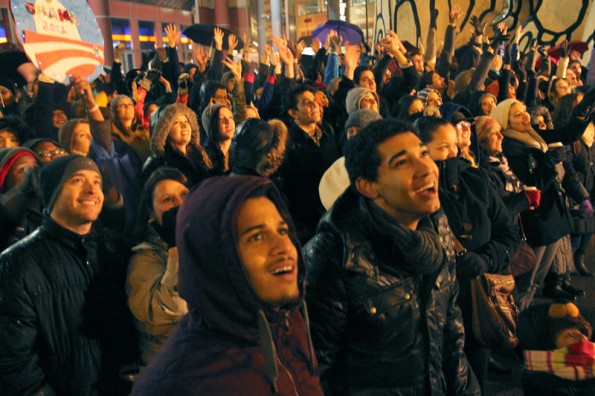The Youth Vote Helps Re-Elect President Obama

Young people may have sealed President Obama’s re-election, according to a series of post-election tallies. While there was concern about the political interest of voters aged 18 to 29, this demographic came out to the polls in record numbers Tuesday.
According to a Gallup Poll published in July, only 58 percent of registered young voters in the United States said they would "definitely vote" in the 2012 election. This statistic was well below the 78 percent of young voters who pledged to vote in 2008 and had experts worried that an “enthusiasm gap” may cost President Obama re-election.
Exit polls, however, show young voters made up 19 percent of the electorate, a 1-point increase from 2008, and Obama won the youth vote 60 percent compared to 37 percent for Romney.
The Center for Information and Research on Civic Learning and Engagement (CIRCLE) estimates 22 to 23 million people between the ages of 18 and 29 nationwide voted this election. CIRCLE also says that younger voters were key for Obama in the battleground states such as Florida, Ohio, Pennsylvania, and Virginia.
Peter Levine, Director of CIRCLE, said if Obama had not received this support, it would have cost him the election.
“It is because [Mitt Romney] lost the youth vote pretty decisively in all those battleground states that he is not going to be the next president of the United States.”
Heather Smith, president of Rock the Vote, an organization which specializes in registering young voters, said a lot of the enthusiasm is run-off from 2008 when the Democratic Party reached out to first-time voters.
"There were massive registration efforts. [Young people were] targeted and they were spoken to.”
While both candidates spent their fair share campaigning in these battleground states, the president focused primarily on colleges and universities for support, while Gov. Romney spent a lot of time in factories and plants.
States such as Ohio and Florida have some of the largest college campuses, which worked in Obama’s favor. In Ohio, for example, College Democrats at universities such as Ohio State and Kent State had the unique opportunity to host celebrities such as actress Olivia Munn and actor Jack Black who encouraged students to vote early and shuttled them to the polls -- incentivising students to cast their ballots.
Because Ohioans were able to vote more than a month before Election Day, College Democrats at Kent State arranged for daily shuttle services to be provided for any student who wanted to take advantage of them, which made it exceptionally easy for these young people to vote. This strategy became common for College Democrats.
The Democratic ground game at large universities in battleground states was clearly effective, and many of the College Republicans focused less on their college campus and more on the outside community, where they thought they would be more effective. This may have attributed to the President’s victory as well.
And young people didn’t just determine the presidency, young people flooded the polls in every states and helped to, for example, elect Elizabeth Warren to U.S Senate with the support of over 60 percent support in Massachusetts.
Smith called youth participation in American politics the “new normal," considering about half of young adults have voted in presidential elections since 2004.
“This voting bloc can no longer be an afterthought to any political party or campaign.”




